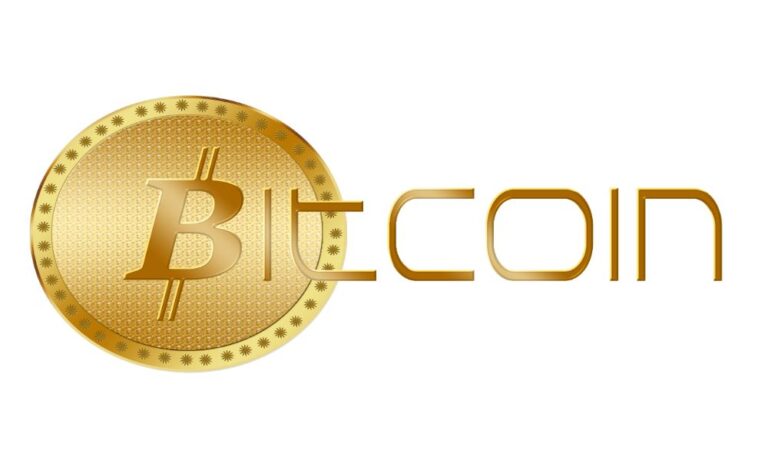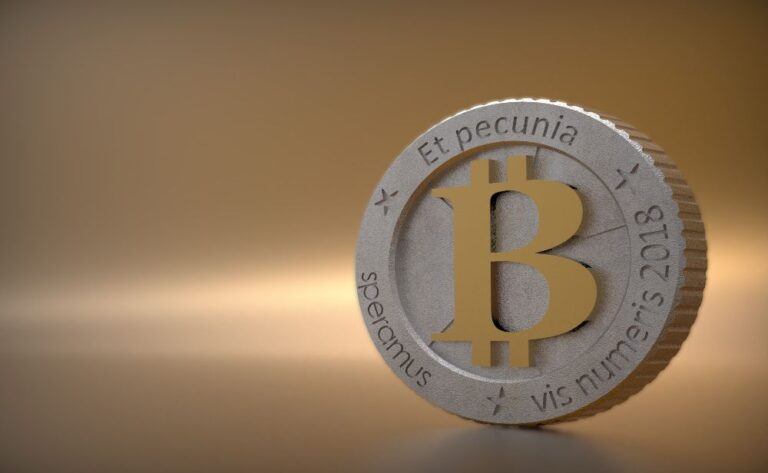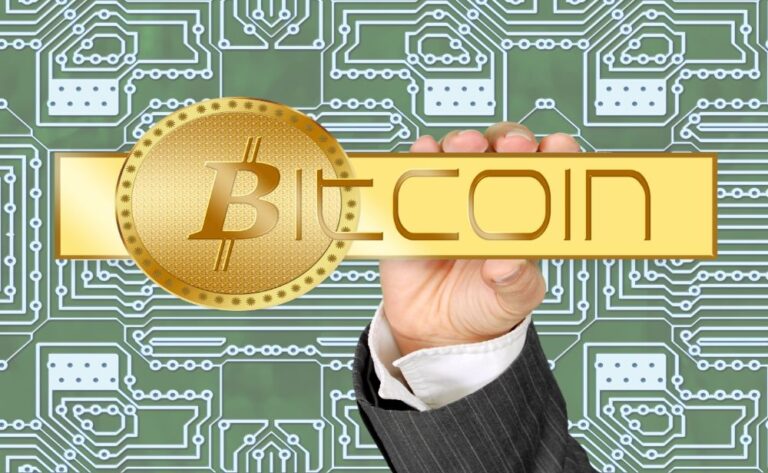How to Earn Crypto: 9 Ways To Earn Crypto For Free In 2022

Bitcoin is becoming an increasingly popular investment option for individuals (and even corporations) worldwide. It is not surprising that people are looking for methods to participate in Bitcoin, the largest cryptocurrency. Nevertheless, not everyone can purchase Bitcoin due to their financial circumstances. In this post, we will demonstrate how to acquire Bitcoins without cost. Our staff has tried and tested each option, which is available to everyone with a mobile phone and internet connection.
How to Profit From Bitcoin in 2022
Participating in one of the following activities within the cryptocurrency ecosystem is the best method to earn Bitcoin. The quantity of cryptocurrency that can be earned relies on variables such as difficulty, time commitment, and potential profitability.
1. Deposit accounts
2. Staking
3. yield agriculture
4. Rebate apps
5. Understand Cryptography
Surveys and Opinion Polls
Referral Programs 7.
8. Airdrops
9. Play-to-Earn
List of the Top Bitcoin Earning Methods
1. Investment Accounts
A cryptocurrency savings account has become a wildly popular technique of earning for cryptocurrency owners and can be found on both centralised exchanges and dedicated platforms. In conventional finance, high-yield savings accounts are rather straightforward. A client will secure funds in the account. The bank will then borrow money from this account to service finances and loans; however, clients are typically unaware of this process. They will repay the account with interest over time. Similar to traditional savings accounts, crypto savings accounts operate in a similar fashion, only with bitcoin.
A crypto savings account is the recommended technique of earning for novice users. It has simple entry requirements, and the buying and locking-up processes can typically be completed on the same platform. The offered yields are not as high as those offered by other techniques, but they are significantly more competitive than what most banks give. BlockFi, Nexo, Crypto.com, and Celsius Network are some of the most popular platforms to earn interest. Using the Crypto.com App, investors may earn APYs of 3% or higher on well-known currencies as as Bitcoin, Ethereum, USDC, and Solana.
There are yield-affecting layers in Crypto.com’s earnings structure, which is intriguing. Users that stake the platform’s native CRO token unlock more profit possibilities on supported cryptocurrencies. Keeping crypto for a longer period of time will also result in bigger returns.
This measure is generally consistent among cryptocurrency savings accounts. Customers can select flexible terms, which carry a much lower APY but allow investors to respond swiftly to market fluctuations. Alternately, cryptocurrency holders can lock their tokens for periods of 12 months or more and receive bigger profits, but face the risk of their now-inaccessible coins losing value.
In addition, cryptocurrency savings accounts often lack the same consumer safeguards as bank accounts. Governments typically insure bank balances up to a specific limit in the event of theft or bankruptcy. Banks will certainly have their own insurance fund. Certain exchanges and crypto-savings accounts will be insured, therefore it would be prudent to investigate this in order to calibrate risk tolerance.
2. Staking
Staking is the technique of securing crypto coins in a “smart contract” to confirm blockchain transactions. When staked tokens are chosen to verify deals on a particular blockchain, they are rewarded, typically with a percentage of the transaction fee. Staking has become the obvious successor to crypto mining because it is significantly more environmentally friendly.
Staking is comparable to using a cryptocurrency savings account. Stakers must deposit their tokens for usage by a third party and will get tokens as interest. The primary distinction is that savings accounts are irrelevant to the economic operation of a blockchain. Staking, on the other hand, helps safeguard a network and assure its seamless operation.
Moreover, staking is frequently required to obtain governance votes. These votes can then be used to propose or support new ideas for the direction of the blockchain. Staking can really encourage consumers to participate in the day-to-day operations of their investments. Several factors govern the amount of money that can be won through betting. The most significant element is network congestion; the greater the number of individuals risking, the lower the possible earnings. Gas costs and commission charges may also have an influence.
Initially, staking was accomplished using supported wallets or directly on-chain through a decentralized application. In recent years, the process has been greatly simplified, and a number of prominent exchanges now accept both staking and savings accounts. Binance offers one of the most robust and effective staking programs of any renowned centralized exchange. Lido.Fi and StakeWise are the most popular companies that specialize in staking a wide variety of crypto assets.
Staking is also possible on decentralized exchanges. Notably, DEXs may only enable staking their native coin, which can make staking several cryptocurrencies inconvenient.
In general, wagering provides a better return than utilising a savings account or debit card. This is because it is typically somewhat riskier. Staking is executed via smart contracts, which are a relatively new technology. They may be susceptible to vulnerabilities or exploits, therefore staked assets are at risk if the network is compromised.
The great majority of investors lack the financial and technological resources to run a whole operation on their own. They will instead use stake pools (known as delegating). If the manager of a pool (known as a validator) performs improperly, they run the danger of having their salary reduced. Due to a validator’s malevolent behaviour, the delegator may wind up losing all of their cryptos via no fault of their own.
When staking directly using a wallet or DeFi application, it is crucial to find a trusted validator. Considering parameters such as uptime, total staked value, and commission costs will assist in reducing the number of alternatives. If you want to make larger staking returns, it is advised that you choose only the top crypto DEX.
3. Yield Agriculture
Yield farming is one of the most sophisticated and risky techniques of income available to crypto investors. This method employs the decentralised financial technology known as automated market makers (AMM). To function, AMM-based exchanges rely on liquidity pools. Investors can lend their tokens to these pools in exchange for interest, or sometimes a percentage of the transaction fees paid.
When certain pools have low liquidity, exchanges increase APY rates algorithmically to entice investors to lock up tokens. Once sufficient liquidity is established, the yield falls. Finding these “low liquidity, high APY” pools, cultivating them until their earning potential declines, and then moving on to the next high-reward pool is yield farming. Utilizing yield farming in this manner opens some of the biggest yield potentials of any income source. A well-optimized strategy can yield a 100% annualised return (APY).
As of May 2022, Beefy.finance is one of the most popular yield farming platforms, with a total value of $470 million. There are over 700 “vaults” available (essential pools for specific tokens). Users can store their cryptocurrencies in a vault and receive a return. The software also displays a safety rating, which might assist risk-averse earners in avoiding unsafe earning pools.
Even with an aggregator, yield farming is quite dangerous. It is a highly competitive subsegment of the decentralised financial industry. Pools with unusually high APYs might rapidly become unprofitable. Due to fees and lockout periods, it is possible to lose crypto if a person’s plan is subpar or if they are simply too sluggish.
4. Studying Cryptography
Various crypto platforms give free crypto in exchange for completing activities and watching instructive videos. It provides new investors with a little amount of funds up front and teaches them the fundamentals of cryptocurrencies. This approach is commonly known as “Learn and Earn” and is very similar to micro-tasking for little amounts of money. Numerous major exchanges offer it, with others likely to follow suit.
Coinbase Earn and Binance Academy are two prominent instances of products for learning how to earn. Coinmarketcap, a well-known portfolio manager and market tracker, also offers a learn-to-earn service.
Anyone with a Coinbase account has the ability to earn free cryptocurrency. The exchange provides a rewards-based teaching programme for studying blockchain initiatives. The quantity of the prize varies depending on the exact coin. Using Coinbase Pro, the amount earned in cryptocurrency for each completed quiz can be converted to Bitcoin.
Any eligible Coinbase user can participate in Coinbase Earn by viewing educational content on the website for the supported cryptocurrencies. To earn more than $500 in complimentary cryptocurrency, users must:
• View informative videos on the selected coin
• Pass the final multiple-choice examination
• Receive digital assets in Coinbase wallet
The offered variety of cryptocurrencies is restricted and subject to change. Overall, Coinbase Earn is a simple and straightforward approach for bitcoin novices to earn a few hundred dollars by learning about blockchain projects.
Obviously, knowing about crypto is not a particularly lucrative way to generate money. Each platform has a profit ceiling between $10 and $60, although this range varies. Considering the time required to accumulate this amount, it may not be beneficial for everyone.
Nonetheless, if novices take advantage of all the big learn-to-earn programmes available, it can be a useful method for climbing the cryptocurrency ladder. In addition to time and verification documents, there are relatively little hazards associated with earning cryptocurrency in this manner, which can make it an attractive option.
Cashback Reward Applications
Using a cashback loyalty app is one of the simplest methods to obtain free Bitcoin. These are loyalty schemes that allow consumers to earn a modest commission while shopping with a cashback-supported online merchant or vendor. These are the two most popular Bitcoin Cash Back & Rewards apps:
• Lolli App
• Foldapp
Bitcoin rewards apps are free to download, and registration and account creation are also free. To begin earning Bitcoin rewards on online shopping purchases, consumers just install a Chrome extension on their web browser. There is no risk or effort required, and anyone can do it.
Bitcoin cashback incentive apps function by depositing a tiny portion of the purchase price into the customer’s Bitcoin wallet. The percentage amount depends on the shop, and there may be a 90-day waiting period. As demonstrated below, Bitcoin reward apps such as Lolli allow access to tens of thousands of online shopping bargains and discounts from the world’s most popular online retailers.
Once the app is loaded on Chrome and the user visits a compatible online merchant, a pop-up displaying the rebate % will show immediately. When a purchase is made, Bitcoins will be credited to the user’s account after the return time has ended.
The free Bitcoins can then be withdrawn and stored in a Bitcoin wallet. Below is an example of a Lolli account that has earned 0.0054 free Bitcoins, equivalent to $96 at current exchange rates, for purchasing a few online purchases.
Polls and Surveys
Every day, consumer data is collected online and sold to third parties for profit. Decentralized data exchange networks like as INSTARS enable ordinary people to earn free cryptocurrencies by selling their data and consent-based feedback.
Users can earn popular cryptocurrencies such as INSTAR, EOS, and DAI by participating in the following platform activities. These tokens can be staked on the platform to receive further rewards or exchanged for Bitcoin on a trading exchange.
• Verification bonus for new account registration
• Take a photograph of your receipts.
• Participating in surveys and polls
• Studying cryptocurrency and blockchain initiatives
• Sharing with a companion (or two)
Participating in online polls and surveys is a popular way to earn free Bitcoins. Using the INSTARS platform, users may perform everyday activities and receive EOS tokens for each completed assignment. The questionnaires are based on the user’s profile information.
In order to receive free cryptocurrency, users can also upload a receipt of goods or services purchased along with input about the experience. Each user can upload up to three receipts every day, each of which must contain the name, address, date, transaction number, and total amount of the business. Once the image and description of the experience, together with its rating, have been reviewed, EOS tokens will be deposited into the user’s wallet.
Referral Programs.
Individuals can earn a little bonus by promoting cryptocurrency products to their friends and family through word of mouth. The main crypto exchanges will offer a registration incentive to the new business for bringing in new consumers. Using a unique promotion code or referral link, anyone can engage in these referral programs and earn additional revenue. Coinbase has one of the most popular cryptocurrency referral programs, rewarding $10 USD for each new user who trades on the exchange.
How it operates:
1. Visit the Coinbase website and create an account
Copy the referral link or send an email invitation to your buddy.
Receive $10USD when a referred user opens an account and trades more than $100USD in fiat currency.
Individuals with a following on social media or a website can engage in affiliate programmes to earn free digital money. Using the same example, Coinbase Affiliates will pay its members 50% of the trading fees of suggested consumers for the first three months. The more affiliate accounts there are, the larger the possibility for recurring money.
Airdrops
Airdrops are among the rarest earning chances available. Participation may be entirely free. The principle is straightforward: newly-launched or forthcoming cryptocurrencies will distribute tokens to community members. This is performed in order to artificially stimulate expenditure inside the ecosystem. The manner in which airdrops priorities recipients varies. Others will demand tokens to be staked or locked away in a pool in order to qualify.
Suppose, for instance, that Solana was releasing a new ecosystem token for usage on its blockchain. The devs may just airdrop the new tokens to holders of Solana.
Alternately, the airdropped tokens might be allocated to the top 500 network stakers or to the most active community members on Discord, forums, or Telegram. People may be required to like or subscribe to a social media account or share a post in order to participate. This is not a full list of airdrop distribution methods, and it is important to evaluate each event on its own merits.
Participation in airdrops necessitates preparation. Keeping abreast with news and forthcoming crypto releases might help investors avoid missing out on possibilities. Certain platforms have introduced tools to keep their communities informed of future airdrops.
The CoinMarketCap airdrop mechanism allows users to observe prior events as well as participate in ongoing and forthcoming ones. Some famous cryptocurrency exchanges, like as Binance, offer airdrop possibilities to their customers, albeit deposits may be necessary.
Airdrops are not always perceived as “free money,” although this is sometimes the case. Certain events will necessitate an up-front investment to participate. Furthermore, airdrops are susceptible to huge sell-offs. While the objective of these is to increase adoption and community spending, it is highly usual for the price to plummet immediately after an airdrop as recipients sell their tokens for profit. They are also quite competitive, and it can be difficult to find “free airdrops” that do not rapidly fill up. A fact that many airdrop participants are unaware of is that tokens obtained for free will be subject to taxation. To guarantee that these are included in end-of-year reporting, it is advised to employ reputable crypto tax software.
Play-for-Cash
Play-to-earn games are the exact opposite of the increasingly popular microtransaction concept for mobile games. These games are extremely diverse, ranging from simple flash games to huge worlds full with strategy and content. The objective for which these games distribute cryptocurrency is comparable to that of airdrops. They are meant to increase the use of the token and its associated gaming platform by the community.
Potential rewards are typically proportional to the amount of effort or money invested. Smaller, browser-based games, such as Crypto POPCOIN, often require no initial investment to join. However, earnings are typically limited to a few dollars per hour.
In contrast, the majority of prominent play-to-earn games focus around NFTs. While it is not always necessary to purchase NFTs to begin earning, it typically becomes easier to do so when more are acquired. Native tokens per hour played/battle won, lottery pools, or NFT drops that can be sold or traded on a third-party marketplace are all viable methods of payout. There have been multiple releases of popular P2E crypto games that, in addition to earning potential, are also enjoyable to play.
Axie Infinity, a trading card game that takes several tropes and gameplay elements from the Pokemon franchise, is perhaps the most well-known crypto-based game. The ability for players to construct “decks” and level up their armies increases their chances of winning battles and acquiring crypto or unusual NFT things. The game has a staggering 2.8 million active players as of May 2022.
The Sandbox (metaverse), Splinterlands (trading cards), Gods Unchained (trading cards), Zed.run (virtual horse racing and breeding), and Ember Sword are all notable play-to-earn games (MMORPG).
Crypto-based P2E games can be entertaining, but they lag behind more popular PC and console games. When playing a game that isn’t that fascinating, the grind required to accumulate a substantial profit is unlikely to be worthwhile. Investing in NFT products for a strong start might also be risky if the gaming platform fails and the price of its linked token falls.
Frequent Asked Question
Can I acquire Bitcoin without cash?
Individuals may get started with Bitcoin without spending money or draining their bank accounts. Several easy ways to begin earning Bitcoin include:
• Receiving payment in Bitcoin for minor jobs
• Accepting Bitcoin as payment for goods and services
• Participating in online polls and surveys that pay in Bitcoin
• Publishing compelling posts on platforms such as Steemit that pay for them
What Applications Offer Free Bitcoin?
There are numerous cryptocurrency applications that distribute free Bitcoins. The Lolli App, a popular mobile app for earning free Bitcoin, is a loyalty programme that rewards online shoppers with a small BTC rebate for purchases at supported merchants. The acquired Bitcoin can then be sent to a Bitcoin hardware wallet.
Conclusion
There are so many options for cryptocurrency holders to generate extra money that it might be intimidating. Investors now have the option of combining different income-generating processes to maximise their income, as the number of available solutions continues to expand. Important considerations must be made while selecting a suitable manner of producing income. Comparing risk factors, possible APYs, and access to earning opportunities will play a significant role in the decision-making process.





